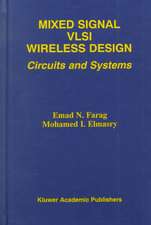Descriptive Complexity: Texts in Computer Science
Autor Neil Immermanen Limba Engleză Paperback – 30 sep 2012
| Toate formatele și edițiile | Preț | Express |
|---|---|---|
| Paperback (1) | 588.21 lei 6-8 săpt. | |
| Springer – 30 sep 2012 | 588.21 lei 6-8 săpt. | |
| Hardback (1) | 763.78 lei 6-8 săpt. | |
| Springer – 20 noi 1998 | 763.78 lei 6-8 săpt. |
Din seria Texts in Computer Science
- 20%
 Preț: 406.21 lei
Preț: 406.21 lei - 20%
 Preț: 675.36 lei
Preț: 675.36 lei - 20%
 Preț: 370.59 lei
Preț: 370.59 lei - 20%
 Preț: 474.58 lei
Preț: 474.58 lei - 20%
 Preț: 306.37 lei
Preț: 306.37 lei - 20%
 Preț: 366.94 lei
Preț: 366.94 lei - 20%
 Preț: 1244.39 lei
Preț: 1244.39 lei - 20%
 Preț: 503.88 lei
Preț: 503.88 lei - 20%
 Preț: 379.65 lei
Preț: 379.65 lei - 20%
 Preț: 444.93 lei
Preț: 444.93 lei - 20%
 Preț: 411.75 lei
Preț: 411.75 lei - 20%
 Preț: 305.31 lei
Preț: 305.31 lei - 17%
 Preț: 366.70 lei
Preț: 366.70 lei - 20%
 Preț: 409.70 lei
Preț: 409.70 lei - 20%
 Preț: 370.23 lei
Preț: 370.23 lei - 20%
 Preț: 411.53 lei
Preț: 411.53 lei - 20%
 Preț: 441.71 lei
Preț: 441.71 lei - 20%
 Preț: 423.53 lei
Preț: 423.53 lei - 20%
 Preț: 515.36 lei
Preț: 515.36 lei - 15%
 Preț: 637.58 lei
Preț: 637.58 lei - 20%
 Preț: 353.34 lei
Preț: 353.34 lei - 20%
 Preț: 356.82 lei
Preț: 356.82 lei - 20%
 Preț: 743.62 lei
Preț: 743.62 lei - 20%
 Preț: 663.45 lei
Preț: 663.45 lei - 20%
 Preț: 536.66 lei
Preț: 536.66 lei -
 Preț: 457.75 lei
Preț: 457.75 lei - 20%
 Preț: 181.92 lei
Preț: 181.92 lei - 20%
 Preț: 330.42 lei
Preț: 330.42 lei - 20%
 Preț: 358.24 lei
Preț: 358.24 lei -
 Preț: 385.84 lei
Preț: 385.84 lei - 20%
 Preț: 394.57 lei
Preț: 394.57 lei - 20%
 Preț: 344.76 lei
Preț: 344.76 lei - 20%
 Preț: 621.18 lei
Preț: 621.18 lei - 20%
 Preț: 350.86 lei
Preț: 350.86 lei - 20%
 Preț: 348.89 lei
Preț: 348.89 lei - 20%
 Preț: 339.95 lei
Preț: 339.95 lei - 20%
 Preț: 199.57 lei
Preț: 199.57 lei - 20%
 Preț: 341.30 lei
Preț: 341.30 lei - 23%
 Preț: 726.94 lei
Preț: 726.94 lei - 20%
 Preț: 325.30 lei
Preț: 325.30 lei - 20%
 Preț: 595.80 lei
Preț: 595.80 lei - 20%
 Preț: 593.48 lei
Preț: 593.48 lei -
 Preț: 454.31 lei
Preț: 454.31 lei
Preț: 588.21 lei
Preț vechi: 735.26 lei
-20% Nou
Puncte Express: 882
Preț estimativ în valută:
112.57€ • 117.09$ • 92.93£
112.57€ • 117.09$ • 92.93£
Carte tipărită la comandă
Livrare economică 14-28 aprilie
Preluare comenzi: 021 569.72.76
Specificații
ISBN-13: 9781461268093
ISBN-10: 1461268095
Pagini: 288
Ilustrații: XVI, 268 p.
Dimensiuni: 155 x 235 x 15 mm
Greutate: 0.41 kg
Ediția:Softcover reprint of the original 1st ed. 1999
Editura: Springer
Colecția Springer
Seria Texts in Computer Science
Locul publicării:New York, NY, United States
ISBN-10: 1461268095
Pagini: 288
Ilustrații: XVI, 268 p.
Dimensiuni: 155 x 235 x 15 mm
Greutate: 0.41 kg
Ediția:Softcover reprint of the original 1st ed. 1999
Editura: Springer
Colecția Springer
Seria Texts in Computer Science
Locul publicării:New York, NY, United States
Public țintă
ResearchCuprins
1 Background in Logic.- 1.1 Introduction and Preliminary Definitions.- 1.2 Ordering and Arithmetic.- 1.3 Isomorphism.- 1.4 First-Order Queries.- 2 Background in Complexity.- 2.1 Introduction.- 2.2 Preliminary Definitions.- 2.3 Reductions and Complete Problems.- 2.4 Alternation.- 2.5 Simultaneous Resource Classes.- 2.6 Summary.- 3 First-Order Reductions.- 3.1 FO ? L.- 3.2 Dual of a First-Order Query.- 3.3 Complete problems for L and NL.- 3.4 Complete Problems for P.- 4 Inductive Definitions.- 4.1 Least Fixed Point.- 4.2 The Depth of Inductive Definitions.- 4.3 Iterating First-Order Formulas.- 5 Parallelism.- 5.1 Concurrent Random Access Machines.- 5.2 Inductive Depth Equals Parallel Time.- 5.3 Number of Variables Versus Number of Processors.- 5.4 Circuit Complexity.- 5.5 Alternating Complexity.- 6 Ehrenfeucht-Fraïssé Games.- 6.1 Definition of the Games.- 6.2 Methodology for First-Order Expressibility.- 6.3 First-Order Properties Are Local.- 6.4 Bounded Variable Languages.- 6.5 Zero-One Laws.- 6.6 Ehrenfeucht-Fraïssé Games with Ordering.- 7 Second-Order Logic and Fagin’s Theorem.- 7.1 Second-Order Logic.- 7.2 Proof of Fagin’s Theorem.- 7.3 NP-Complete Problems.- 7.4 The Polynomial-Time Hierarchy.- 8 Second-Order Lower Bounds.- 8.1 Second-Order Games.- 8.2 SO?(monadic) Lower Bound on Reachability.- 8.3 Lower Bounds Including Ordering.- 9 Complementation and Transitive Closure.- 9.1 Normal Form Theorem for FO(LFP).- 9.2 Transitive Closure Operators.- 9.3 Normal Form for FO(TC).- 9.4 Logspace is Primitive Recursive.- 9.5 NSPACE[s(n)] = co-NSPACE[s(n)].- 9.6 Restrictions of SO.- 10 Polynomial Space.- 10.1 Complete Problems for PSPACE.- 10.2 Partial Fixed Points.- 10.3 DSPACE[nk] = VAR[k + 1].- 10.4 Using Second-Order Logic to Capture PSPACE.- 11 Uniformity andPrecompulation.- 11.1 An Unbounded Number of Variables.- 11.2 First-Order Projections.- 11.3 Help Bits.- 11.4 Generalized Quantifiers.- 12 The Role of Ordering.- 12.1 Using Logic to Characterize Graphs.- 12.2 Characterizing Graphs Using Lk.- 12.3 Adding Counting to First-Order Logic.- 12.4 Pebble Games for Ck.- 12.5 Vertex Refinement Corresponds to C2.- 12.6 Abiteboul-Vianu and Otto Theorems.- 12.7 Toward a Language for Order-Independent P.- 13 Lower Bounds.- 13.1 Håstad’s Switching Lemma.- 13.2 A Lower Bound for REACHa.- 13.3 Lower Bound for Fixed Point and Counting.- 14 Applications.- 14.1 Databases.- 14.2 Dynamic Complexity.- 14.3 Model Checking.- 14.4 Summary.- 15 Conclusions and Future Directions.- 15.1 Languages That Capture Complexity Classes.- 15.2 Why Is Finite Model Theory Appropriate?.- 15.3 Deep Mathematical Problems: P versus NP.- 15.4 Toward Proving Lower Bounds.- 15.5 Applications of Descriptive Complexity.- 15.6 Software Crisis and Opportunity.- References.
Caracteristici
Self-contained introduction to a fundamental area in computer science Provides readers with an understanding of logic and complexity Explores applications and future directions Includes numerous examples and exercises to further illustrate the ideas presented This subject has important applications to databases such as analyzing the queries computable in polynomial time, analyzing the parallel time needed to compute a query, and the analysis of nondeterministic classes



















